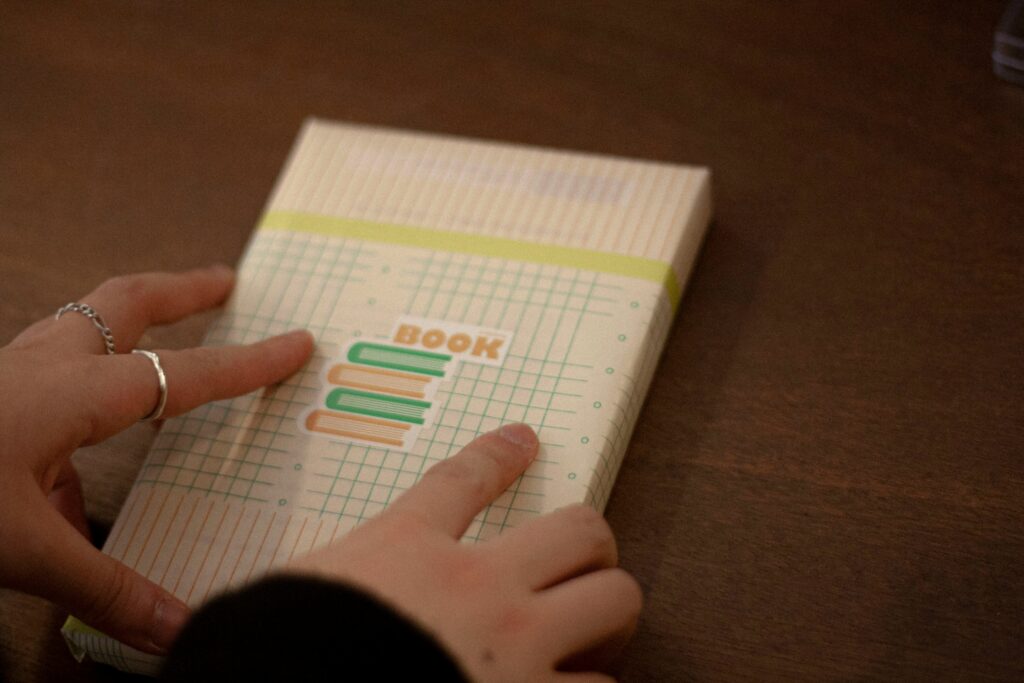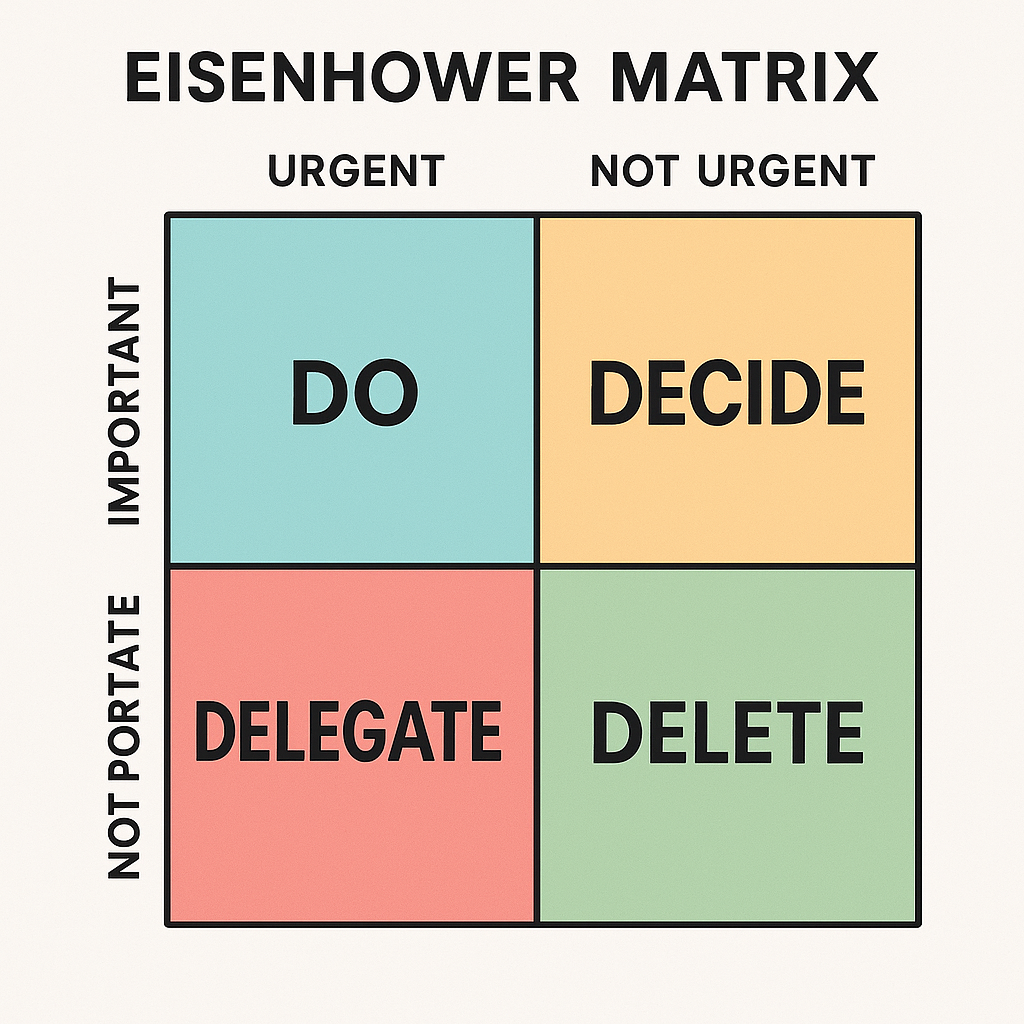Drowning in To-Dos? Use the Eisenhower Matrix to Conquer Overwhelm and Reclaim Your Day!
Ever stare at your to-do list, feeling like it’s less a helpful guide and more a monstrous, hydra-headed beast growing new tasks faster than you can tackle them? You’re not alone. The relentless pace of modern life, with its endless emails, looming deadlines, and constant demands on our attention, often leaves even the most organized among us feeling utterly swamped. That nagging sense of “I have too much to do and not enough time” can be paralyzing, leading to stress, missed opportunities, and a general feeling of being out of control.
But what if there was a simple, yet incredibly powerful, tool to cut through the chaos? What if you could gain clarity, make smarter decisions about how you spend your precious time, and finally bid farewell to that crushing feeling of overwhelm? This article is your lifeline. We’re about to dive deep into the Eisenhower Matrix, a proven framework that will transform your approach to tasks, help you distinguish between what truly matters and what can wait (or be eliminated!), and empower you to take back control of your schedule and your sanity. Get ready to swap panic for productivity, and constant busyness for meaningful accomplishment.

Understanding the Eisenhower Matrix: Your Secret Weapon Against Chaos
The Eisenhower Matrix, also known as the Urgent/Important Matrix, is a simple four-quadrant tool credited to Dwight D. Eisenhower, the 34th U.S. President. His wisdom, “What is important is seldom urgent and what is urgent is seldom important,” forms the core of this powerful time management strategy. It’s all about prioritizing tasks based on two key factors: urgency and importance. This isn’t just another theory; it’s a practical, actionable framework that helps you make sense of your workload.
Deconstructing Urgent vs. Important: The Core Distinction
Many of us confuse urgency with importance. An urgent task demands immediate attention, often because it has a looming deadline or someone else is waiting on it. Think of a ringing phone or an email notification. An important task, on the other hand, contributes to your long-term goals, values, and mission. These are the activities that genuinely move the needle in your life or work, even if they don’t scream for your immediate attention. Learning to differentiate between these two is the first step to beating overwhelm.
The Four Quadrants: Where Do Your Tasks Belong?
The Eisenhower Matrix divides tasks into four distinct categories, each requiring a different approach:
- Quadrant 1: Urgent and Important (Do First!): These are crises, pressing problems, and deadlines that require immediate action. Think of a client emergency or a last-minute report due. While necessary, spending too much time here indicates a reactive approach to life.
- Quadrant 2: Important, but Not Urgent (Schedule It!): This is the sweet spot for proactive work, planning, relationship building, and self-care. These tasks contribute to your long-term success but don’t have immediate deadlines. Examples include strategic planning, skill development, exercise, or spending quality time with loved ones. This is where you want to spend most of your time to prevent future crises.
- Quadrant 3: Urgent, but Not Important (Delegate It!): These tasks often come with a sense of urgency but don’t significantly contribute to your goals. They are often interruptions driven by others’ priorities. Think of some emails, certain meetings, or minor requests. The key here is to find ways to delegate or politely decline.
- Quadrant 4: Not Urgent and Not Important (Eliminate It!): These are time-wasters and distractions that provide little to no value. Social media scrolling, excessive mindless Browse, or unnecessary busywork often fall into this quadrant. The goal is to minimize or eliminate these tasks entirely.
Applying the Eisenhower Matrix: Your Step-by-Step Guide to Clarity
Now that you understand the theory, let’s get practical. Implementing the Eisenhower Matrix isn’t complicated, but it does require a bit of intentionality.
Step-by-Step Application: From Chaos to Clarity
- List Everything Out: Start by dumping every single task, commitment, and idea swirling in your head onto a piece of paper or a digital document. Don’t filter, just list. This act alone can be incredibly therapeutic!
- Evaluate Each Task: Go through your list, one item at a time, and ask yourself two critical questions:
- “Is this task urgent?” (Does it require immediate attention?)
- “Is this task important?” (Does it contribute to my long-term goals or values?)
- Place in the Quadrant: Based on your answers, assign each task to one of the four quadrants. Be honest with yourself!
- Take Action:
- Do: Tackle Quadrant 1 tasks immediately.
- Schedule: Block out dedicated time for Quadrant 2 tasks in your calendar. This is where your greatest gains will come from.
- Delegate: Identify who can handle Quadrant 3 tasks, or how you can politely decline them.
- Delete: Cross off Quadrant 4 tasks without guilt.
- Review and Adjust: Your priorities can shift. Make it a habit to review your matrix daily or weekly, especially when new tasks arise.
Common Pitfalls and How to Avoid Them
Even with a fantastic tool like the Eisenhower Matrix, it’s easy to stumble. One common pitfall is overestimating the importance of urgent tasks, leading to constant firefighting. Another is the fear of delegating, thinking “it’s faster if I just do it myself.” Remember, the goal is efficiency and focus. Don’t let perfection be the enemy of progress. Be realistic about what you can achieve and learn to say “no” when necessary.

Real-Life Transformations: How the Matrix Changes Lives
Let’s look at how the Eisenhower Matrix can play out in real scenarios.
Case Study: Mark Reclaims His Evenings
Mark, a marketing professional, constantly felt swamped. His days were a blur of meetings, urgent client emails, and last-minute requests. Evenings were spent catching up, leaving him exhausted. He decided to try the Eisenhower Matrix.
- Quadrant 1 (Urgent/Important): Client emergencies, critical campaign launches. (He tackled these immediately).
- Quadrant 2 (Important/Not Urgent): Strategic content planning, professional development course, one-on-one meetings with his team. (He scheduled dedicated blocks for these, preventing future crises).
- Quadrant 3 (Urgent/Not Important): Routine administrative tasks, responding to non-essential internal emails. (He delegated these to an intern or batched them for specific times).
- Quadrant 4 (Not Urgent/Not Important): Mindless social media scrolling during work hours, unnecessary long coffee breaks. (He eliminated these distractions).
Within a few weeks, Mark noticed a dramatic shift. By proactively scheduling Quadrant 2 tasks, he reduced the number of urgent fires. Delegating helped free up his time, and eliminating time-wasters gave him back precious hours. Mark finally started leaving work on time, enjoying his evenings, and feeling a renewed sense of control.
The Student’s Advantage: Sarah’s Academic Success
Sarah, a university student, struggled with procrastination and feeling overwhelmed by her coursework. Essays, readings, and group projects piled up. Applying the Eisenhower Matrix helped her turn things around.
- Quadrant 1: Due-tomorrow assignments, last-minute study for an imminent exam.
- Quadrant 2: Starting research for a major paper well in advance, reviewing lecture notes weekly, attending office hours, joining a study group. (These proactive steps significantly reduced her stress).
- Quadrant 3: Replying to non-essential group chat messages immediately, running errands for friends. (She learned to batch messages and set boundaries).
- Quadrant 4: Binge-watching shows, aimless internet surfing. (She limited these activities, dedicating that time to more productive pursuits).
Sarah not only improved her grades but also found more time for her hobbies and social life, demonstrating the matrix’s power beyond just professional settings.
Beyond the Matrix: Sustaining Your Newfound Productivity
The Eisenhower Matrix is a fantastic start, but maintaining your newfound clarity requires ongoing effort and the integration of other helpful habits.
Building Proactive Habits: Living in Quadrant 2
The true power of the Eisenhower Matrix lies in consistently prioritizing Quadrant 2 tasks. These are the activities that prevent problems, foster growth, and align with your long-term vision. This means carving out dedicated time for planning, skill development, networking, and self-care – even when there’s no immediate deadline. It’s about working smarter, not just harder. According to productivity experts, consistently focusing on Quadrant 2 activities is the hallmark of highly effective individuals.
The Power of Saying “No”: Setting Boundaries for Sanity
One of the hardest lessons for many is the art of saying “no.” Whether it’s to an additional committee at work, an extra chore at home, or a social invitation that doesn’t align with your priorities, saying “no” to Quadrant 3 and 4 tasks is crucial for protecting your time and energy. It’s not about being unhelpful; it’s about being strategically helpful where it truly matters. Remember, every “yes” to something less important is a “no” to something truly important.
Regularly Review and Reflect: Your Personal Check-In
Your life isn’t static, and neither should your approach to managing it be. Make it a habit to regularly review your priorities. At the end of each week, take a few minutes to reflect: What worked? What didn’t? Where did you get stuck? Were you pulled into too many urgent-but-unimportant tasks? Adjust your strategy as needed. This continuous improvement loop is what ensures long-term success in beating overwhelm.
Conclusion: It’s Time to Take Control!
Feeling overwhelmed is a universal experience, but it doesn’t have to be your constant state. The Eisenhower Matrix isn’t just a fancy diagram; it’s a practical, reliable, and actionable tool that empowers you to gain clarity, make intentional choices about your time, and ultimately, reclaim your sense of control. By consistently distinguishing between the urgent and the important, you’ll shift from a reactive mode to a proactive one, reducing stress and maximizing your impact.
Don’t wait for the next wave of tasks to crash over you. Choose one strategy from this guide today – perhaps listing out all your current tasks and attempting to place them in the matrix. Even small steps create a ripple effect. Remember, progress, not perfection, is the goal. You have the power within you to transform your relationship with your workload and build a life that feels more balanced and fulfilling. It’s time to stop reacting and start orchestrating your success!
Frequently Asked Questions
How do I stop feeling overwhelmed all the time?
The key is to proactively manage your tasks and commitments rather than reacting to them. The Eisenhower Matrix helps by categorizing tasks into urgent/important quadrants, allowing you to prioritize effectively and reduce the number of “urgent” fires. Building in regular planning and review sessions can also significantly reduce feelings of being overwhelmed.
What are quick ways to de-stress when I’m overwhelmed?
When you’re feeling overwhelmed, taking a quick break can be highly effective. Try a 5-minute mindfulness exercise, deep breathing, a short walk, or listening to calming music. These brief interventions can help reset your mind, allowing you to return to your tasks with more clarity.
How can I simplify my daily routine?
Simplifying your daily routine often involves identifying and eliminating non-essential tasks, batching similar activities together (e.g., answering emails at specific times), and automating where possible. Using a tool like the Eisenhower Matrix helps you see which activities truly contribute to your goals and which can be streamlined or removed.
What is the Eisenhower Matrix best used for?
The Eisenhower Matrix is best used for prioritizing tasks and making decisions about how to allocate your time and resources effectively. It’s particularly useful for individuals who feel overwhelmed by their workload, struggle with procrastination, or have difficulty distinguishing between what needs to be done now and what should be done for long-term success.
How often should I use the Eisenhower Matrix?
For initial implementation and when feeling particularly overwhelmed, use it daily. Once you get the hang of it, a weekly review to plan your week ahead and a quick daily check-in to adjust for new tasks or shifting priorities is often sufficient. Consistency is more important than frequency.

